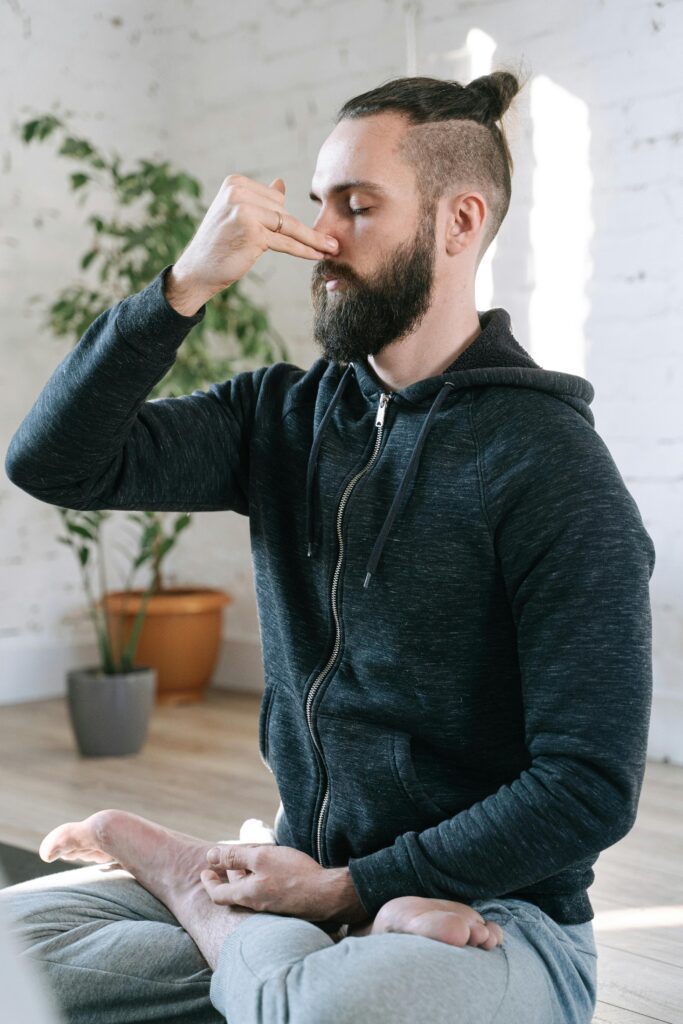Online counselling support from Clear-Clarity Counselling Services in Gillingham Kent
Please click on central image or scroll down to view:
Breathing is a necessity of life that usually occurs without much thought. When you breathe in, blood cells receive oxygen and release carbon dioxide. Carbon dioxide is a waste product that’s carried back through your body and exhaled.
Improper breathing can upset the oxygen and carbon dioxide exchange and contribute to anxiety, panic attacks, fatigue, and other physical and emotional disturbances.
The next time you’re feeling anxious, there are a variety of anxiety breathing exercises to try. Learn how to use breathing exercises to help relieve feelings of anxiety and stress.
Belly Breathing
According to The American Institute of Stress, 20 to 30 minutes of “belly breathing,” also known as abdominal breathing or diaphragmatic breathing, each day can reduce stress and anxiety.
Find a comfortable, quiet place to sit or lie down. For example, try sitting in a chair, sitting cross-legged, or lying on your back with a small pillow under your head and another under your knees.
- Place one hand on your upper chest and the other hand on your belly, below the ribcage.
- Allow your belly to relax, without forcing it inward by squeezing or clenching your muscles.
- Breathe in slowly through your nose. The air should move into your nose and downward so that you feel your stomach rise with your other hand and fall inward (toward your spine).
- Exhale slowly through slightly pursed lips. Take note of the hand on your chest, which should remain relatively still.
Although the sequence frequency will vary according to your health, most people begin by doing the exercise three times and working up to five to 10 minutes, one to four times a day.

Box Breathing
Also known as four-square breathing, box breathing is very simple to learn and practice. In fact, if you’ve ever noticed yourself inhaling and exhaling to the rhythm of a song, you’re already familiar with this type of paced breathing. It goes like this:
- Exhale to a count of four.
- Hold your lungs empty for a four-count.
- Inhale to a count of four.
- Hold the air in your lungs for a count of four.
- Exhale and begin the pattern anew.
4-7-8 Breathing
The 4-7-8 breathing exercise, also called the relaxing breath, acts as a natural tranquilizer for the nervous system. At first, it’s best to perform the exercise seated with your back straight. Once you become more familiar with this breathing exercise, however, you can perform it while lying in bed.
- Place and keep the tip of your tongue against the ridge of tissue behind your upper front teeth for the duration of the exercise.
- Completely exhale through your mouth, making a “whoosh” sound.
- Close your mouth and inhale quietly through your nose to a mental count of four.
- Hold your breath for a count of seven.
- Exhale completely through your mouth, making a whoosh sound to a count of eight.
Mindfulness Breathing
Mindfulness meditation involves focusing on your breathing and bringing your attention to the present without allowing your mind to drift to the past or future. Engaging in mindfulness breathing exercises serves the same purpose, which can help ease your anxiety.
One mindfulness breathing exercise that you can try involves choosing a calming focus, including a sound (“om”), positive word (“peace”), or phrase (“breathe in calm, breathe out tension”) to repeat silently as you inhale or exhale. Let go and relax. If you notice that your mind has drifted, take a deep breath, and gently return your attention to the present.
Simple Breathing Exercise
You can perform this simple breathing exercise as often as needed. It can be done standing up, sitting, or lying down. If you find this exercise difficult or believe it’s making you anxious or panicky, stop for now. Try it again in a day or so and build up the time gradually.
- Inhale slowly and deeply through your nose. Keep your shoulders relaxed. Your abdomen should expand, and your chest should rise very little.
- Exhale slowly through your mouth. As you blow air out, purse your lips slightly but keep your jaw relaxed. You may hear a soft “whooshing” sound as you exhale.
- Repeat this breathing exercise. Do it for several minutes until you start to feel better.

About the Author
My name is Linda Thompson, I am a qualified and insured counsellor working in Gillingham and Medway, Kent. I support individuals and couples with all kinds of issues, from bereavement to anxiety, relationship difficulties, trauma, abuse and coping with the general stressors of life. Please get in touch to book a session with me. Join me on Facebook.

